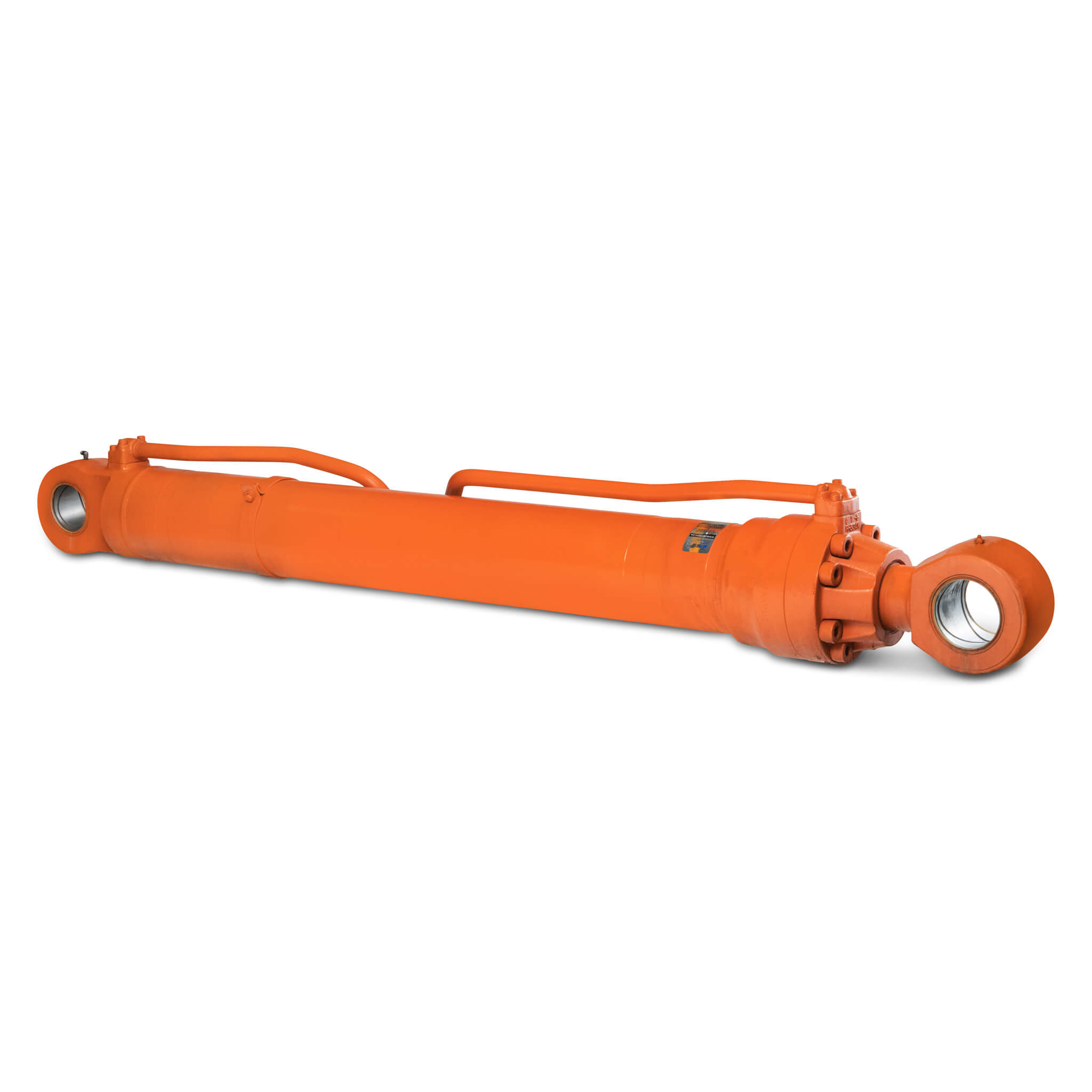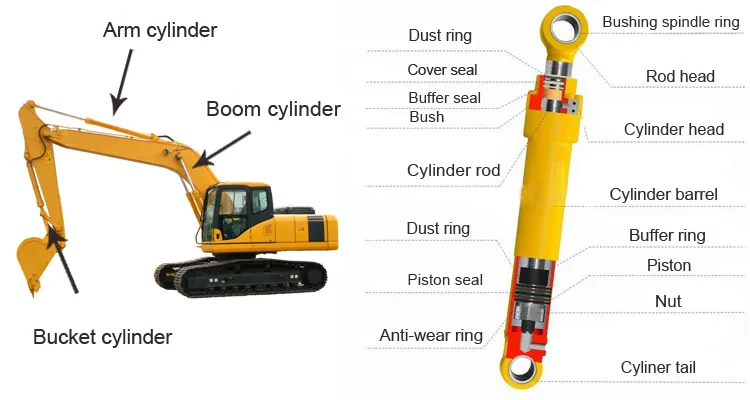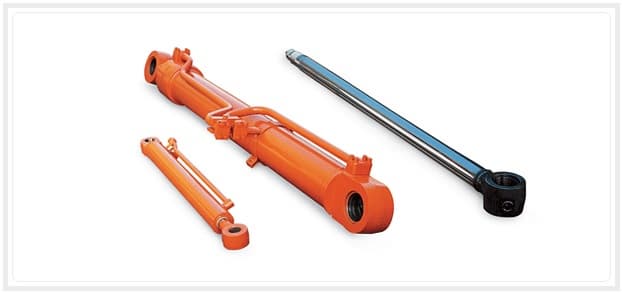Product Description
| long stroke telescopic hydraulic cylinders | |||
| Part number | Tube dia mm | Rod dia mm | Stroke mm |
| 205-63-57100 | 120 | 85 | 1285 |
| 206-63-57100 | 120 | 85 | 1285 |
| 205-63-57160 | 120 | 85 | 1285 |
| 205-63-57120 | 135 | 95 | 1490 |
| 203-63-57130 | 125 | 85 | 1120 |
| 203-63-57131 | 125 | 85 | 1120 |
| 205-63-57130 | 125 | 85 | 1120 |
Specifications
1.Supply to USA,Europe,and Australia, Russia.
2.Material:Stainless Steel
3.Professional performance excavator parts supplier
4. High quality and low price
FAQ
Q1: Are you Manufacture or Trade Company?
A1: We are manufacture,we have 20 years experience for supply Metal material and products in domestic.
Q2: How can we guarantee quality?
A2: Always a pre-production sample before mass production;Always final Inspection before shipment;
Q3: What is your terms of payment ?
A3: 1.T/T: 30% deposit in advance, the balance 70% paid before shipment
2.30% down payment, the balance 70% paid against L/C at sight
3.CHINAMFG negotiation
Q4: Can you provide Certificates for aluminum materials ?
A4:Yes,we can supply MTC-Material Test Certificate.
Q5: Can you provide sample?
A5: Yes, we can provide you sample, but you need to pay for the sample and freight firstly. We will return the sample fee after
you make an order.
| Certification: | GS, RoHS, CE, ISO9001 |
|---|---|
| Pressure: | Medium Pressure |
| Work Temperature: | Normal Temperature |
| Acting Way: | Double Acting |
| Working Method: | Piston Cylinder |
| Adjusted Form: | Switching Type |
| Customization: |
Available
|
|
|---|

How does a boom cylinder contribute to efficient and controlled lifting and lowering?
A boom cylinder plays a crucial role in enabling efficient and controlled lifting and lowering in heavy equipment. Here’s a detailed explanation:
When it comes to lifting and lowering operations, a boom cylinder provides several key contributions:
- Powerful Hydraulic Force: A boom cylinder generates the necessary hydraulic force to lift and lower heavy loads. The cylinder is connected to the boom or lifting arm of the equipment and uses hydraulic pressure to extend or retract, thus moving the attached load. The hydraulic force generated by the cylinder is capable of exerting significant lifting capacity, allowing for efficient handling of heavy objects.
- Variable Force Control: Boom cylinders have the ability to adjust the force exerted during lifting and lowering operations. Hydraulic systems can regulate the pressure and flow rate of the hydraulic fluid, which directly affects the force generated by the cylinder. This variable force control allows operators to match the lifting capacity to the specific load requirements, ensuring efficient and controlled lifting and lowering.
- Smooth and Precise Movement: Boom cylinders provide smooth and precise movement during lifting and lowering operations. The hydraulic system allows for gradual acceleration and deceleration, minimizing jerky movements that could potentially damage the load or compromise operator safety. The controlled movement facilitated by the boom cylinder enables operators to position the load accurately and make fine adjustments as needed.
- Stroke Length Adjustment: Boom cylinders often have adjustable stroke lengths, which determine the maximum extension and retraction of the cylinder. This feature allows operators to optimize the lifting and lowering process by adjusting the stroke length according to the height or depth requirements of the task. It provides flexibility and control over the range of motion, making the operation more efficient and adaptable to varying work conditions.
- Integration with Hydraulic Control Systems: Boom cylinders are typically integrated into hydraulic control systems, which enable centralized control and coordination of multiple hydraulic functions. These systems can be equipped with joysticks, control valves, and electronic sensors that provide precise command inputs and feedback. The integration of boom cylinders with hydraulic control systems enhances the overall efficiency and control of lifting and lowering operations.
By combining powerful hydraulic force, variable force control, smooth movement, stroke length adjustment, and integration with hydraulic control systems, boom cylinders contribute to efficient and controlled lifting and lowering in heavy equipment. These features enable operators to handle heavy loads with precision, optimize productivity, and ensure safe and reliable operations in various industries.

How does a boom cylinder handle variations in hydraulic seal technology?
A boom cylinder is designed to handle variations in hydraulic seal technology. Here’s a detailed explanation:
Hydraulic seals are critical components in boom cylinders, as they prevent fluid leakage and ensure the efficient operation of the hydraulic system. Over time, advancements in seal technology have led to the development of various types of hydraulic seals with different characteristics and capabilities. A boom cylinder is engineered to accommodate these variations in hydraulic seal technology. Here’s how it handles them:
- Compatibility: Boom cylinders are designed to be compatible with different types of hydraulic seals. They are constructed with seal grooves and dimensions that allow for the installation of various seal profiles, such as O-rings, lip seals, or piston seals. The cylinder is engineered to work effectively with the specific seal type or design chosen for a particular application.
- Seal Selection: The selection of hydraulic seals for a boom cylinder depends on factors such as operating conditions, fluid compatibility, pressure requirements, and temperature ranges. The cylinder design takes into account the seal selection process, ensuring that the cylinder’s materials, surface finishes, and tolerances are suitable for the chosen seal technology. This ensures optimal sealing performance and longevity.
- Seal Retention: Boom cylinders incorporate features to securely retain hydraulic seals in their proper positions. These features may include seal backup rings, snap rings, or integrated seal retention systems. The cylinder’s design ensures that the selected seal technology is effectively retained, preventing seal displacement or failure during operation.
- Seal Maintenance and Replacement: Boom cylinders are designed to facilitate seal maintenance and replacement. They may include access points or disassembly features that allow for convenient seal inspection, lubrication, or replacement. The cylinder design takes into consideration the specific requirements of the chosen seal technology, making it easier for technicians to service or replace seals as necessary.
- Seal Performance Optimization: Boom cylinders undergo rigorous testing and validation processes to optimize seal performance. The cylinder’s design and manufacturing processes aim to minimize seal friction, reduce wear, and enhance sealing efficiency. This ensures that the cylinder can effectively handle the specific characteristics and variations of the chosen hydraulic seal technology.
Overall, a boom cylinder is engineered to handle variations in hydraulic seal technology. It is designed to be compatible with different seal types, facilitate seal selection, retain seals securely, allow for seal maintenance and replacement, and optimize seal performance. These features ensure that the boom cylinder can effectively accommodate the advancements and variations in hydraulic seal technology, providing reliable and efficient sealing in hydraulic systems.
It’s important to follow the manufacturer’s recommendations and specifications regarding the selection, installation, and maintenance of hydraulic seals in boom cylinders to ensure optimal performance and longevity.

How does a boom cylinder contribute to precise boom control and positioning?
A boom cylinder plays a crucial role in enabling precise boom control and positioning in heavy machinery. Here’s a detailed explanation of how a boom cylinder contributes to this:
- Linear Force Generation: A boom cylinder is a hydraulic actuator that generates linear force. When hydraulic fluid is supplied under pressure to one side of the cylinder, it pushes the piston, extending the cylinder and resulting in the extension of the boom. By controlling the flow rate and pressure of the hydraulic fluid, operators can precisely control the speed and force of the boom’s movement, allowing for accurate positioning and control.
- Boom Stability and Rigidity: Boom cylinders provide stability and rigidity to the boom structure. As the cylinder extends, it locks the boom in position, preventing unwanted movement or sagging. This stability is crucial when performing tasks that require precise positioning, such as lifting or placing heavy loads, manipulating attachments, or performing delicate operations. The boom cylinder’s ability to maintain the boom’s position enhances overall control and accuracy.
- Controlled Retraction: Boom cylinders not only facilitate boom extension but also controlled retraction. By supplying hydraulic fluid under pressure to the other side of the cylinder, the piston retracts, allowing for controlled and precise boom retraction. This controlled retraction is essential for tasks that require accurate placement or lowering of loads, adjusting attachment positions, or retracting the boom to a desired resting position.
- Hydraulic Control System: Boom cylinders are part of a hydraulic control system that enables precise boom control and positioning. The hydraulic control system regulates the flow and pressure of hydraulic fluid entering and exiting the cylinder, allowing operators to adjust the speed, force, and direction of the boom’s movement. Fine adjustments can be made to achieve the desired positioning, ensuring precise control over the boom’s actions.
- Integration with Other Components: Boom cylinders are integrated with other components, such as hydraulic valves, pumps, and sensors, to facilitate precise boom control and positioning. Hydraulic valves control the direction and flow of hydraulic fluid, while pumps provide the necessary pressure. Sensors can provide feedback on the boom’s position, load conditions, or operating parameters, enabling operators to make real-time adjustments for optimal control and positioning.
By combining linear force generation, boom stability, controlled retraction, hydraulic control systems, and integration with other components, a boom cylinder contributes to precise boom control and positioning. This precision allows operators to execute tasks accurately, maintain stability, and achieve the desired positioning for various operations in industries such as construction, mining, material handling, and more.


editor by CX 2023-11-09